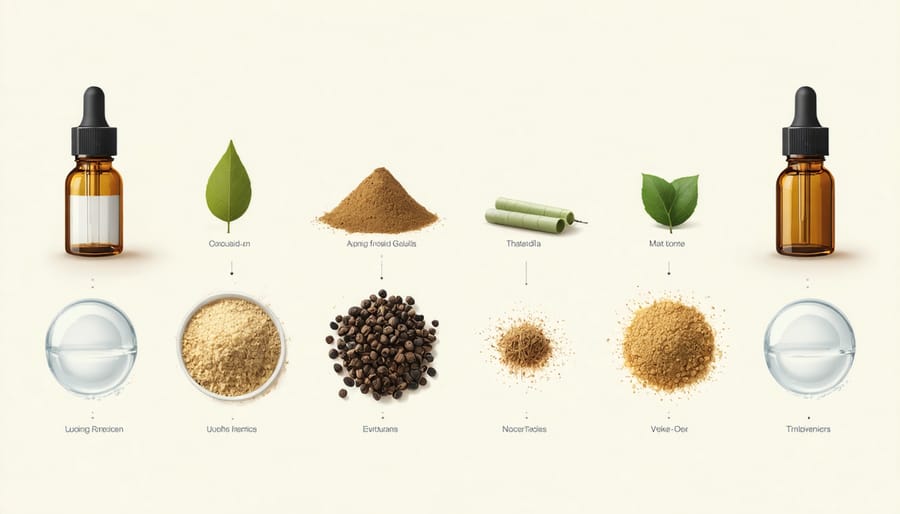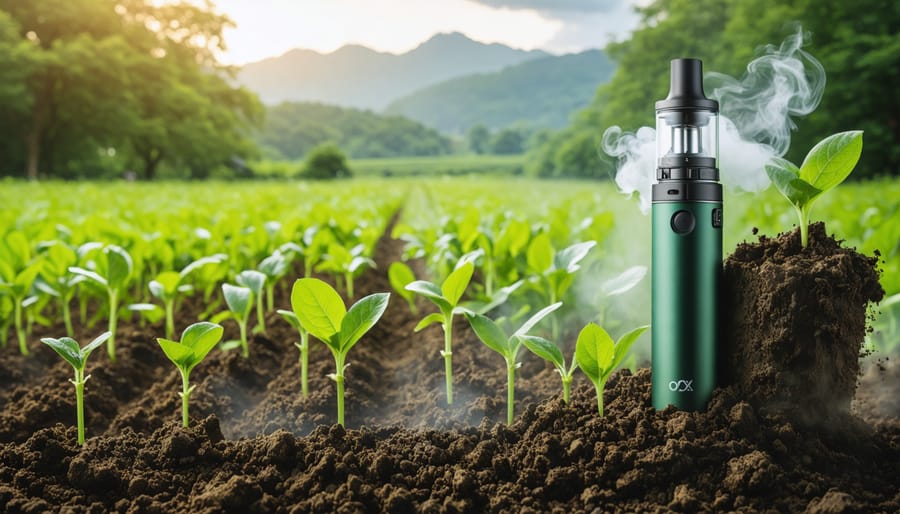How Vaping Influences Sustainable Agriculture: A Shared Journey
Harness sustainable farming practices to reduce vaping’s environmental impact by choosing organic growing methods that enhance soil health and cut chemical use, creating synergy between agriculture and eco-friendly e-liquids. Purchase from local, eco-conscious suppliers like vape shop west island that supports green agriculture initiatives. Implement crop rotation and polyculture systems to boost biodiversity and sequester carbon, mitigating vaping’s contribution to climate change. Advocate for policies that integrate vaping into broader sustainability goals, promoting awareness and collaboration between communities and industries. Discover how this approach boosts food sovereignty by aligning consumer habits with agricultural resilience, fostering a sustainable future.
Understanding Vaping and Its Supply Chain
What is Vaping?
Vaping is the act of inhaling and exhaling vapor produced by an electronic cigarette or similar device. Unlike traditional smoking, vaping uses a battery-powered mechanism to heat a liquid—known as e-liquid or vape juice—into a vapor that can be inhaled. In recent years, vaping has gained popularity, partly due to its perception as a less harmful alternative to smoking and its array of flavors and designs that appeal to personal tastes. However, as vaping becomes more entrenched in daily habits, it raises questions about its broader impacts.
In Canada, where communities are increasingly attentive to sustainable living, the rise of vaping calls for critical evaluation. Vaping devices, often single-use, contribute to electronic waste, posing a challenge to sustainable agriculture practices that emphasize reducing environmental footprints. As community-driven initiatives seek to promote food sovereignty and environmental justice, understanding vaping’s role and exploring sustainable alternatives becomes imperative. By addressing these concerns, communities can actively engage in shaping a more sustainable future.
The Vaping Supply Chain
The production of vaping products involves a complex supply chain, with each step contributing to its overall environmental footprint. At the core, these products are made using materials like metals for coils, lithium for batteries, and various plastics, which require significant resource extraction and energy consumption. The process begins with mining raw materials, often in environmentally sensitive areas, potentially affecting local ecosystems and communities.
Once these materials are extracted, they undergo manufacturing processes that frequently involve high energy use and the emission of greenhouse gases. The flavorings in vape liquids, often derived from agriculturally produced ingredients, also have a sustainability implication. These ingredients can be sourced from mono-crop agriculture, which may lead to biodiversity loss and increased carbon emissions. As these products travel through the supply chain, robust packaging and international shipping add further environmental burdens.
This aspect of the supply chain highlights the urgent need for more sustainable practices and transparent sourcing. Community-driven initiatives in Canada aim to promote responsible production and consumption, encouraging policymakers and consumers alike to prioritize sustainability in vaping products. By understanding these impacts, individuals can advocate for and participate in efforts to create a more sustainable future.

Environmental Impacts of Vaping
Raw Material Sourcing and Farming Practices
In examining the journey of raw materials from farm to vape, it becomes evident that agricultural practices play a crucial role in shaping the sustainability of this burgeoning industry. Tobacco, often used for extracting nicotine, is at the forefront. The cultivation practices applied to this crop can either amplify or mitigate environmental impacts. Shifting toward regenerative agriculture techniques, such as crop rotation and organic farming, offers a path to healthier soils and reduced carbon footprints. Equally important crops, like hemp—which can be used for nicotine substitutes—offer diverse possibilities for sustainable cultivation.
To truly align vaping with sustainability goals, integrating community-driven initiatives is essential. By supporting local farmers and prioritizing fair trade practices, there’s potential to enhance food systems sovereignty and empower communities. Moreover, exploring alternative materials sourced through organic and eco-friendly farming allows us to redefine our consumption patterns, linking vaping products to a wider movement of environmental responsibility and justice. This collective effort is essential for creating a healthier planet for future generations.
E-waste and Its Agricultural Consequences
E-waste from vaping devices poses a significant threat to our agricultural lands, undermining efforts toward sustainable food practices. In Canada, where food sovereignty is deeply valued, this issue demands our attention and collective action. The electronic components of vape products, such as batteries and circuit boards, often contain hazardous materials like heavy metals. When these devices are improperly disposed of, toxins can leach into the soil and water systems, adversely affecting soil health and crop production.
As these toxic substances accumulate, they can disrupt local ecosystems, impacting not just soil vitality but also the broader food chain. This poses a direct threat to the movement toward sustainable agriculture, which relies on healthy, uncontaminated land to produce nutritious food for communities. Addressing this pressing challenge requires a shift toward responsible e-waste management, emphasizing recycling and safe disposal processes.
Community-driven initiatives can play a pivotal role in mitigating the impact of vaping-related e-waste. By promoting awareness and education about proper disposal and recycling options, we can safeguard our agricultural land for future generations. Let’s work together to ensure that our practices contribute positively to the health of both soil and society, fostering a more sustainable and just food system for all Canadians.

Towards Sustainable Vaping Practices
Policy Initiatives and Agricultural Relevance
Canada is actively working toward more sustainable vaping practices, recognizing the impact on both the environment and agriculture. Various Canadian policy initiatives focus on reducing the carbon footprint of vape production and disposal. By encouraging the use of eco-friendly materials and responsible waste management, these policies aim to mitigate potential harm to agricultural ecosystems. The transition to biodegradable vape components, for instance, can prevent the leaching of harmful substances into the soil, protecting food crops and maintaining soil health.
Community-driven innovations are at the heart of these efforts, empowering local groups to participate in sustainable practices. Farmers and consumers are increasingly involved in advocacy and education, voicing the need for policies that support both vaping industry reform and sustainable agriculture. By promoting circular economy principles, where waste is minimized and products are reused, these initiatives align with a broader movement toward food sovereignty and environmental stewardship.
Ultimately, these actions highlight the interconnectedness of industries and underscore the importance of collective effort in achieving sustainability goals. As Canada moves forward, engaging multiple stakeholders in this conversation is crucial to fostering a resilient and equitable food system that aligns with sustainable vaping practices.
Community-Driven Solutions
In Canada, community-driven solutions are blossoming as individuals join forces to address the environmental impacts of vaping while promoting sustainable agricultural practices. Local initiatives are focusing on rethinking consumption and waste management within the vaping industry, aligning with broader efforts to establish sustainable food systems. Community-led projects often begin with simple yet impactful actions, such as organizing vape cartridge recycling programs or advocating for biodegradable packaging.
Local farmers and residents are also collaborating through educational workshops, emphasizing agroecological principles that minimize environmental harm. Innovative farming methods inspired by Indigenous knowledge and permaculture techniques are gaining traction, demonstrating a commitment to both vaping and agriculture sustainability. By promoting dialogue and sharing resources, these communities are not only addressing the current challenges but also nurturing a sense of food sovereignty.
Empowered by their collective efforts, Canadian communities are planting the seeds of change, advancing towards a future where vaping and agriculture coexist harmoniously without compromising ecological integrity. This collaborative approach underlines the potential for positive transformation when communities work together with urgency and hope.

Connecting Vaping with Food Sovereignty
Common Grounds in Sustainability
In the quest for sustainability, both vaping and agriculture can find common ground through shared values and practices that emphasize environmental responsibility and community empowerment. At their core, both sectors can promote practices that reduce environmental degradation and foster a healthy ecosystem. Vaping, when aligned with sustainable principles, can prioritize the use of biodegradable materials in production and packaging, mirroring initiatives in sustainable agriculture that aim to minimize waste and reliance on synthetic inputs.
Sustainable agriculture advocates for biodiversity, local production, and regenerative methods that replenish the earth, principles that can inspire the vaping industry to innovate towards more eco-friendly practices. For instance, using natural, renewable materials for e-liquids and promoting recycling programs for vape products can mirror the closed-loop systems seen in sustainable farming.
Community-driven initiatives play a pivotal role as communities rally around reducing single-use plastics and promoting clean energy sources in both sectors. By embracing these shared values, individuals and communities contribute to a broader movement for food sovereignty and environmental justice, creating a holistic approach to sustainability that bridges these industries. Together, we can build a future where both our agricultural systems and personal choices, like vaping, support ecological balance, thus reinforcing our commitment to a healthier planet for future generations.
Conclusion
The intersection of vaping and sustainable agriculture underscores a critical opportunity for change, especially for Canadian communities passionate about food sovereignty and environmental stewardship. By understanding the environmental impacts of vaping—from the cultivation of plant materials used in e-liquids to the disposal of vaping products—we recognize the shared responsibility to minimize ecological footprints. Individuals and communities can adopt sustainable practices by supporting local and organic farming, reducing waste, and advocating for responsible production standards within the vaping industry. As we move forward, it is crucial to engage in dialogues that drive awareness and action, fostering a culture of sustainability that connects our consumption choices with the health of our planet. Let us seize this moment to champion initiatives that align personal habits with collective environmental goals, ensuring a thriving ecosystem for current and future generations. Together, we can cultivate a more sustainable future, paving the way for a harmonious balance between modern consumer needs and agricultural resilience.


